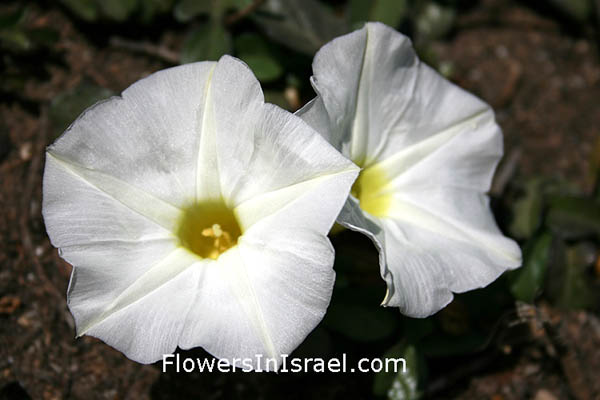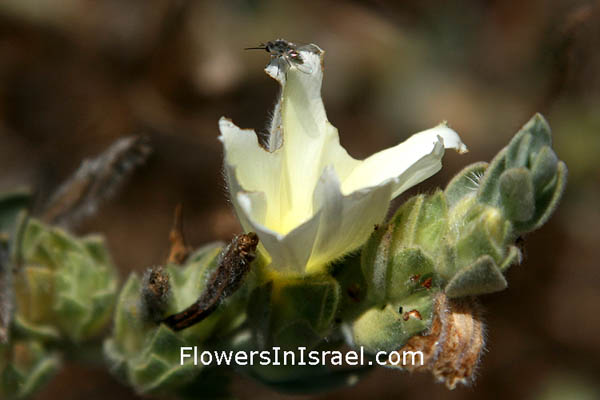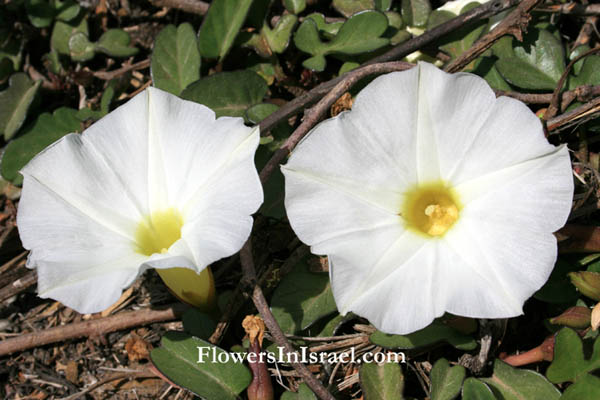Beach morning glory,
Hebrew: לפופית החוף, Arabic: الأثمان
| Scientific name: | Ipomoea imperati (Vahl) Griseb. | |
| Synonym name: | Ipomoea stolonifera (Cyr.) J.F.Gmelin | |
| Common name: | Beach morning glory | |
| Hebrew name: | לפופית החוף | |
| Arabic name: | الأثمان | |
| Family: | Convolvulaceae, חבלבליים |

|
| Life form: | Hemicryptophyte | |
| Succulence: | Leaf succulent | |
| Stems: | 10-15cm high;spread along the ground to a distance of 22m; trail over beach-head sand-dunes and serves as a sand-binder | |
| Leaves: | Alternate, ovate-cordate, entire; 5 lobes, star shape; succulent | |
| Inflorescence: | Flowers solitary, axillary | |
| Flowers: | 5-lobed calyx; corolla funnel-shaped, white with a yellow center | |
| Fruits / pods: | Capsule, small, round; 4 seeds, velvety, dark brown | |
| Flowering Period: | May, June, July, August, September, October | |
| Habitat: | Mediterranean strand | |
| Distribution: | The Mediterranean Woodlands and Shrublands | |
| Summer shedding: | Perennating |

Derivation of the botanical name: Ipomoea, Greek ips, a worm, bind-weed; homoios, similar to; referring to the twining habit of the plant's growth. imperati , named for Ferrante Imperato (1550 - 1625), an apothecary of Naples. stolonifera, having stolons or rooting runners. The Hebrew name: לפופית, lefufit, formed from לפוף, lefuf (=wrapping, binding) with suffix -it.

|